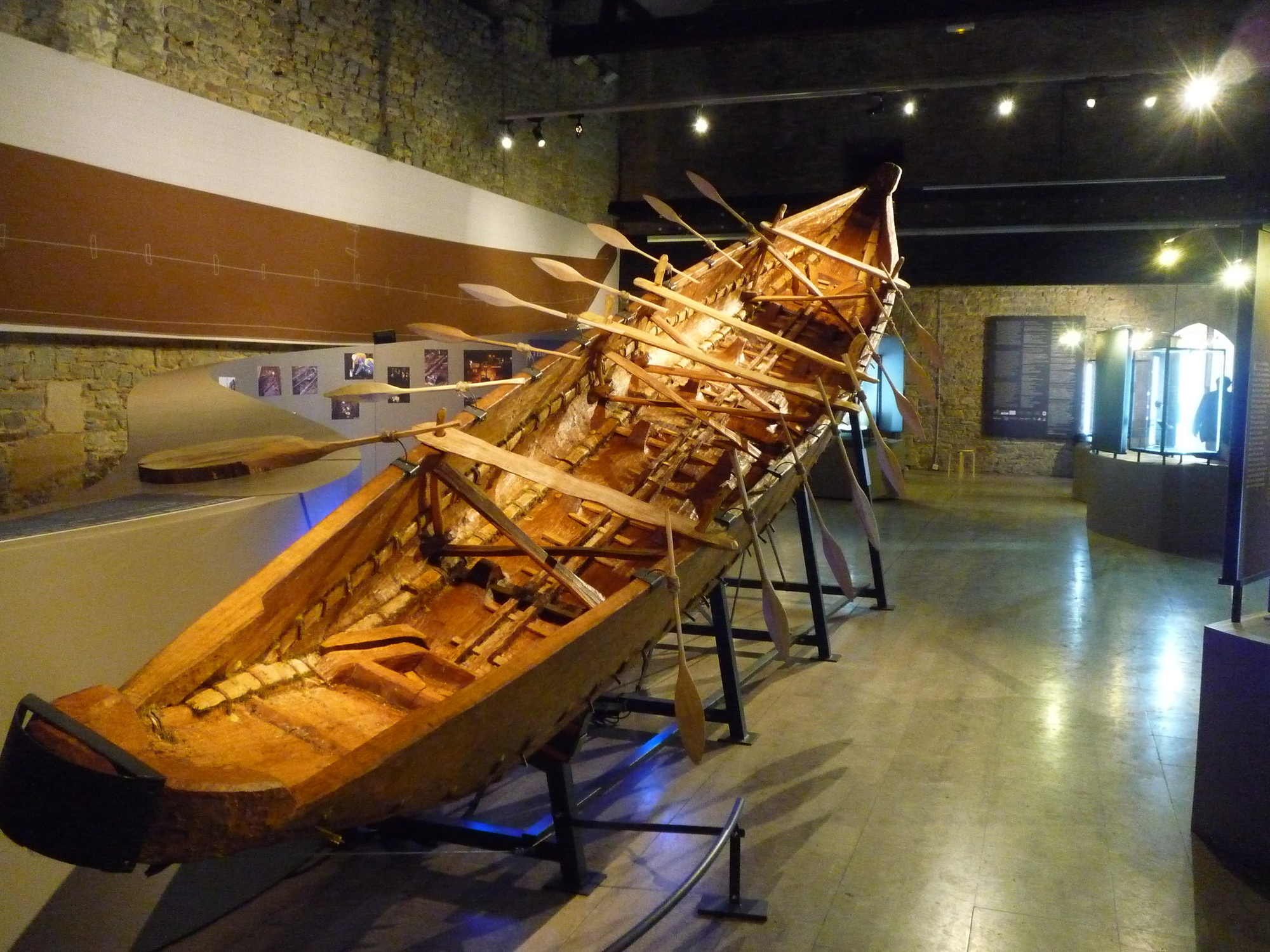
- Home
- A great scientific adventure
- Experimental archaeology
- Boat 1550 BC, the Bronze Age boat
Discovered in Dover in 1992, this wreck led to an exemplary collaboration between the nations of Belgium, France and the United Kingdom. University of Lille 3 and the CNRS worked on this project alongside five other partners.
An exceptional discovery
During excavations in 1992, British archaeologists uncovered planks of oak fastened together by a system of mortise and tenon joints and well-preserved yew withies. One end of the vessel was visible, the other buried. Her total length was estimated to be greater than 9 metres. Major works were put in motion to extract the 3,500-year-old wreck. Indeed, radiocarbon dating confirmed that the remains belonged to one of the oldest sea-going boats to be found in Europe. This find is the uncontested icon of cross-Channel commerce in the Bronze Age, showing that this stretch of sea was a regular trading route long before anyone thought of digging a tunnel. Exceptional resources were deployed to conserve and study the wreck before putting it on display to the public in late 1999 in a special gallery of Dover
Cross-border cooperation
Specialists in maritime archaeology endeavoured to understand the configuration of the boat which, although well preserved, was missing its bow and had been partially dismantled. After fifteen years of fascinating international research they were able to publish a reconstruction of its design and make plans for a replica. They also launched a major exhibition to tell the story of the Channel and North Sea coasts in the Bronze Age. From this idea emerged the notion that some kind of Euroregion existed at that time.
Partners and authors
Associated media
Open Media Library
